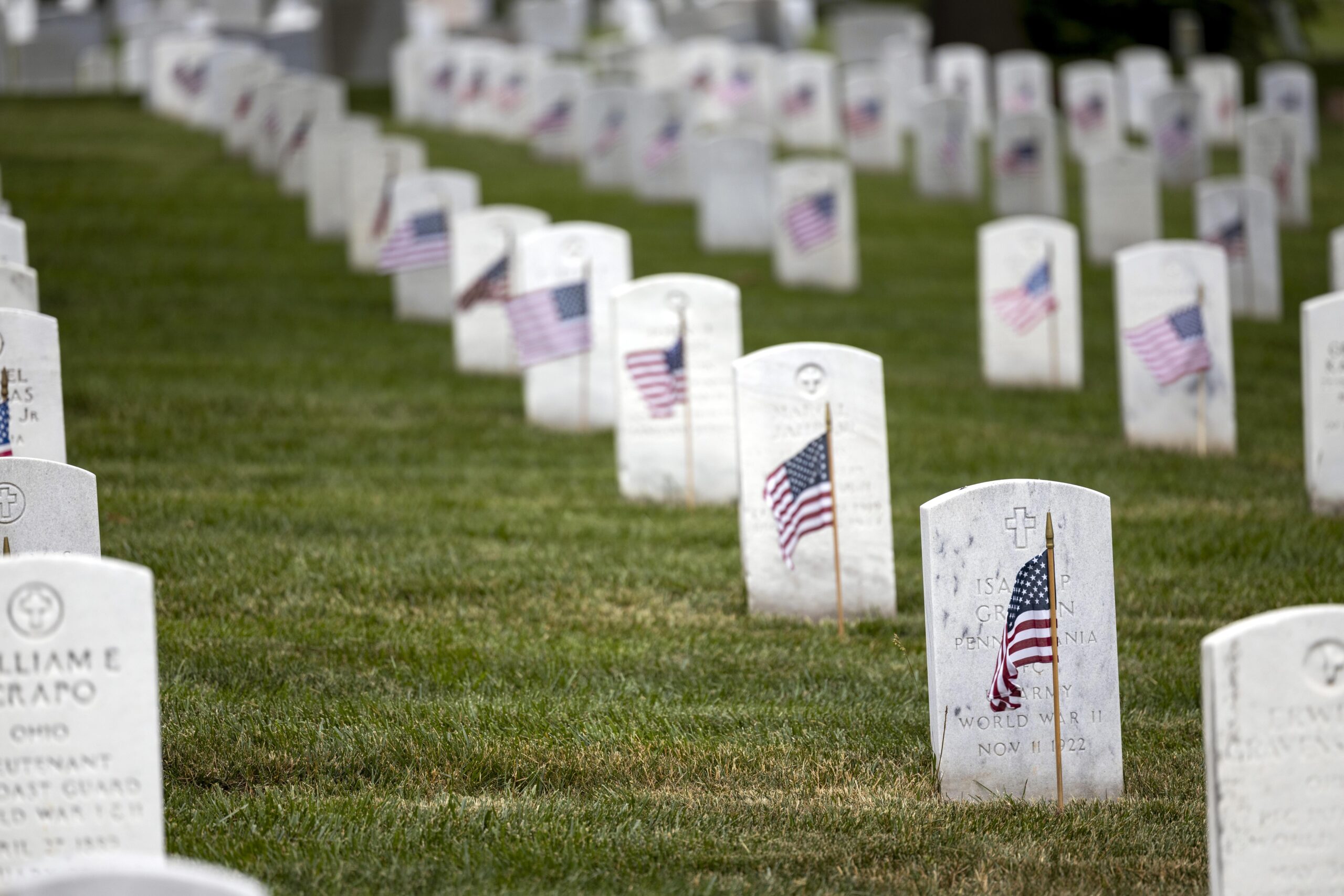“That Nation which respects and honors its dead shall [for]ever be respected and honored itself.”1
– Brevet Lieutenant Colonel Edmund Burke Whitman, 1868
Every year on the last Monday in May, Americans commemorate Memorial Day, a federal holiday, to mourn and pay homage to all those who have died in the armed forces of America. Yet behind Memorial Day, there is a lot of history to be learned and uncovered.
Ever since the American Revolution, there have always been ways to honor those who died in service to their nation, its independence, and the freedom it protects and represents, but no formal holiday came about until the Civil War Era. Post-Civil War, all sorts of communities across America paid homage to their fallen soldiers by praying for the deceased soldiers and decorating their graves with flowers, a custom dating back to Roman times. Yet, there was no singular unifying date; different families and communities honored their dead on completely different days throughout the year.
Then the Grand Army of the Republic (GAR), a strong lobbying organization made up of Civil War veterans led by General John Alexander Logan, with their General Order 11, officially recognized a day of memorial on May 30, 1868. This day was to be known as Decoration Day as it was a day designated for visiting the graves of the dead and decorating them with flowers. May 30th was chosen because GAR thought that was when flowers would be in bloom all across the country.2 On that day, the first national Decoration Day ceremony was held at Arlington National Cemetery in Virginia, which had formerly been the home of General Robert E. Lee. The ceremony paid homage to the approximately 11,250 Union soldiers, 350 Confederate troops, and 2,111 unidentified remains of soldiers who were buried as “unknowns” several decades before the Tomb of the Unknown Soldier was erected. The event was headlined by remarks delivered by General, Congressman, and future President James A. Garfield and included “prayers, dirges, hymns, recitation of the Gettysburg Address and G[eneral].O[rder]. 11, and [a] playing [of] the ‘Star-Spangled Banner.” After the ceremony, people went around the entire cemetery to lay flowers at the graves.
Even though General Logan’s order, General Order No. 11, formally solidified the place of Decoration Day, there were many lobbying efforts before that. Notably, in 1866, women in Columbus, Ohio, lobbied for a unified, set date for everyone in the country to pay respect and decorate the graves of their Civil War dead over two years before GAR issued their Decoration Day Order. Yet, even the ladies of Columbus were not the first to hold some type of day of memorial; smaller events in memoriam of soldiers and sailors who perished took place during the waning days of the Civil War.3
In the following two or so decades, towns, cities, and localities, mostly in the North, began to follow GAR’s lead and began to propose and pass resolutions adopting Decoration Day as a holiday. By 1890, all states that had been a part of the Union during the Civil War had officially adopted Decoration Day as a holiday, but a new name for the holiday began to spring up and started to become popular: Memorial Day. The new name, Memorial Day, especially gained popularity after two bloody, devastating World Wars and several smaller conflicts; it became clear that it was time to broaden Decoration Day to make it a time to honor all who perished in the line of duty, not just some of them, i.e. those who died during the Civil War.4
On May 11, 1950, Congress passed a joint resolution declaring and designating May 30th as Memorial Day; it was meant to be a day to pay “tribute to those who lost their lives in war… [and] as a day for Nation-wide prayer for permanent peace.” They also “requested that the President issue a proclamation calling upon the people of the United States to observe Memorial Day in that manner.” President Harry S. Truman signed the legislation and became the first president to issue a Memorial Day proclamation as president on May 22, 1950. Every single president since then has made an annual Memorial Day proclamation.5
In 1966, President Lyndon Baines Johnson, spurred by a congressional resolution, declared the year as the centennial of Memorial Day for it had first been celebrated in Waterloo, New York, on May 30, 1866.6 President Johnson also signed the Uniform Monday Holiday Act in 1968. The Act, enacted in 1971 under President Richard Milhous Nixon, moved several holidays from their traditional date to a certain Monday to set up three-day weekends because they were good for commerce. This included Memorial Day, which was officially moved from May 30th to the last Monday in May; this is the same day it has been celebrated ever since.7
Memorial Day has become the “unofficial start of summer” and, as a result, has strayed from its original meaning.8 I think that we all need to spend some time on Memorial Day (and the rest of the year, for that matter) to pause for a moment and focus on those who gave their lives for our freedom. In 2000, Congress also recognized the imperative of bringing meaning back into Memorial Day, and that is why they passed the National Moment of Remembrance Act. The Act established 3 p.m. (or 1500 for you military folks using the 24-hour clock) as a national moment of silence, and I encourage you all to pause then and think about what Memorial Day truly means. That does not mean you should refrain from all fun activities with your family or cancel the barbeque; it just means that the most important part of Memorial Day is that we come together as a nation to celebrate the lives and commemorate the sacrifice borne by our soldiers, sailors, and airmen because freedom does not come free.9
- Brevet Lieutenant Colonel Edmund Burke Whitman, Society of the Army of the Cumberland, et al, The Army Reunion with Reports of the Meetings of the Societies of the Army of the Cumberland, the Army of the Tennessee, the Army of the Ohio, and the Army of Georgia (Chicago, Illinois, USA: S.C. Grigs and Company, 1869), “Remarks on National Cemeteries-Original Military Division of Tennessee: Army Reunion,” pg. 225-226.
- “The Origins of Memorial Day,” U.S. Department of Veterans Affairs. https://www.va.gov/opa/publications/celebrate/memday.pdf.
- “Memorial Day,” National Cemetery Administration, June 29, 2023. https://www.cem.va.gov/history/Memorial-Day-History.asp#:~:text=Originally%20called%20Decoration%20Day%2C%20it,faith%2C%20for%20permanent%20peace.%22.
- Blake Stilwell, “How ‘Decoration Day’ Became Memorial Day,” Military.com, May 12, 2020. https://www.military.com/holidays/memorial-day/how-decoration-day-became-memorial-day.html.
- Harry S. Truman, “Proclamation 2889—Prayer for Peace, Memorial Day,” The American Presidency Project, May 22, 1950. https://www.presidency.ucsb.edu/documents/proclamation-2889-prayer-for-peace-memorial-day#:~:text=Now%2C%20Therefore%2C%20I%2C%20Harry,of%20prayer%20for%20permanent%20peace.
- Lyndon Baines Johnson, “Proclamation 3727-Prayer for Peace, Memorial Day, 1966,” The American Presidency Project. May 26, 1966. https://www.presidency.ucsb.edu/documents/proclamation-3727-prayer-for-peace-memorial-day-1966#:~:text=Now%2C%20Therefore%2C%20I%2C%20Lyndon,to%20unite%20in%20such%20prayer.
- Ashley Ross, “This Is Why Memorial Day Is a Three-Day Weekend,” Time, May 27, 2016. https://time.com/4346170/memorial-day-three-day-weekend/.
- History.com Editors, “Memorial Day,” History.com, May 24, 2023. https://www.history.com/topics/holidays/memorial-day-history.
- Ryan Scott, “Memorial Day, 3 p.m.: Don’t Forget,” Forbes, May 24, 2015. https://www.forbes.com/sites/causeintegration/2015/05/24/memorial-day-3pm-dont-forget/?sh=1a1ed73a7f6f.

